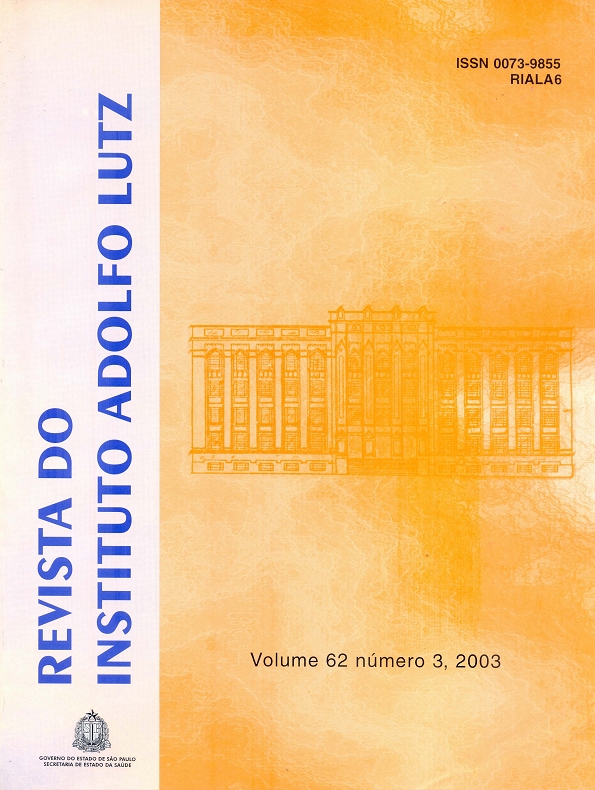Abstract
The aim of this study was to evaluate the refined soybean oil behavior on the discontinued frying process using successive french fries potato frying, submitted to a temperature of 180 ºC, and
surface/volume (S/V) ratios equal to 0.2; 0.4 and 0.6 cm-1. Frying were carried out on household frying pan, where the oil was heated up for 12.5 hours on two days in a row, at controlled temperature, and fresh oil replacement. The potatoes samples underwent lipid and humidity analyses, and the oils obtained during
the frying process were assessed for free fatty acids, peroxide value, conjugated dienes, and total polar compounds. It was observed that the increasing on the surface/volume ratio and on the frying time had a direct influence on the oil alteration. The oil physicochemical alterations were higher on S/V 0.6 cm-1 ratio. Among the frying times studied, the fried products up to 9.5 hours were the most recommended, because over this frying time, an increasing on the alteration level was observed, mainly, on the total polar compounds analysis, reaching values of 25.23 and 26.57%, on the relations S/V 0.4 and 0.6 cm-1, respectively; such values higher than the ones recommended by some countries’ ruling.
References
1. American Oil Chemists´Society. Official methods and recommended practices of the American Oil Chemists´Society. 1990.
2. American Oil Chemists´Society. Official methods and recommended practices of the American Oil Chemists´Society. 1993.
3. Cella, R. C. F.; Regitano-D’arce, M. A. B.; Spoto, M. H. F. Comportamento do óleo de soja refinado utilizado em fritura por imersão com alimentos de origem vegetal. Ciência e Tecnologia de Alimentos, 22: 111-116, 2002.
4. Cuesta, C. et al. Modificaciones de um aceite de oliva durante las frituras sucesivas de patatas. Correlaciones entre distintos índices analíticos y de evaluación global de la degradación. Rev. Agroquím. Tecnol. Aliment., 31: 523-531, 1991.
5. Damy, P. C. Alterações físico-químicas de óleo de soja e da gordura hidrogenada durante o processo de fritura descontinua de batatas. São José do Rio Preto, 2001. [Dissertação de Mestrado em Engenharia e Ciência de Alimentos – Instituto de Biociências, Letras e Ciências Exatas - Universidade Estadual Paulista].
6. Dobarganes, M. C.; Márquez-Ruiz, G.; Velasco, J. Interactions between fat and food during deep-frying. Eur. J. Lipid Sci. Tecnol., 102: 521-528, 2000.
7. Dobarganes, M. C.; Velasco, J.; Dieffenbacher, A. Determination of polar compounds, polymerized and oxidized triacylglycerols, and diacylglycerols in oils and fats. Pure Appl. Chem., 72: 1563-1575, 2000.
8. Firestone, D.; Stier, R. F.; Blumenthal, M. M. Regulation of frying fats and oils. Food Tecnology, 45: 90-94, 1991.
9. Kubow, S. Toxicity of dietary lipid peroxidation products. Trends in Food Sci. and Technol, September: 67-71, 1990.
10. Lima, J. R. Avaliação da qualidade de óleo de soja utilizado para fritura. Campinas, 1994. [Dissertação de Mestrado em Tecnologia de Alimentos - Faculdade de Engenharia de Alimentos, Universidade Estadual de Campinas].
11. Makinson, J. H. et al. Fat uptake during deep-fat frying of coated and incoated froods. J. Food Comp., 1: 93-101, 1997.
12. Masson, L. et al. Comportamiento de aceite poliinsaturados en la preparación de patatas fritas para consumo inmediato: Formación de nuevos compuestos y comparación de métodos analíticos. Grasas y Aceites, 48: 273-281, 1997.
13. Mogharbel, A. D.; Freitas, R. J. S. Influência do aquecimento nos meios de fritura sobre o grau de acidez e índice de iodo. Brasil Alimentos, 20: 35-37, 2003.
14. Monferrer, A.; Villalta, J. La fritura desde un punto de vista práctico (II). Aliment. Equipos Tecnol., 21: 85-90, 1993.
15. Pozo-Díez, R. M. Estudio del proceso de fritura de alimentos frescos y congelados prefritos. Comportamiento del aceite de semilla de girasol de alto contenido en acido oleico. Alcalá de Henares, 1995. [Tesis Doctoral en Farmacia - Facultad de Farmacia, Universidad de Alcalá de Henares].
16. Rani, M.; Chauhan, G. S. Effect of inertermittent frying and frying medium on the quality of potato chips. Food Chemistry, 54: 365-368, 1995.
17. Sanibal, E. A. A.; Mancini-Filho, J. Alterações físicas, químicas e nutricionais de óleos submetidos ao processo de fritura. Food Ingred. South Am., 18: 64-71, 2002.
18. Smith, L. M. et al. Lipid content and fatty acid profiles of various deep-fat fried foods. J. Am. Oil Chem. Soc., 62: 996-999, 1985.
19. Stevenson, S. G.; Vaisey-Genser, M.; Eskin, N. A. M. Quality control in the use of deep frying oils. J. Am. Oil Chem. Soc., 61: 1102-1108, 1984.
20. Warner, K.; Orr, P.; Glynn, M. Effect of fatty acid composition of oils on flavor and stability of fried foods. J. Am. Oil Chem. Soc., 74: 347-356, 1997.

This work is licensed under a Creative Commons Attribution 4.0 International License.
Copyright (c) 2003 Revista do Instituto Adolfo Lutz
